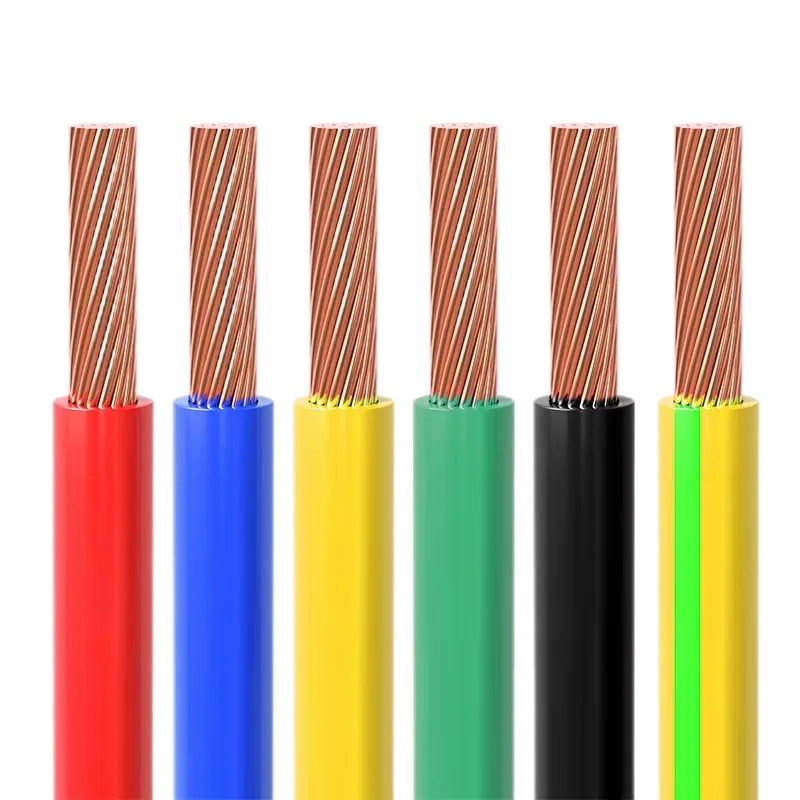Time: 2025-04-28 14:01:01 Source: Henan Province Jianyun Cable Co., Ltd.

SWG and AWG are standardized systems for measuring the diameter of electrical wires, which directly affects their electrical properties like current capacity and resistance.
SWG (Standard Wire Gauge): Also known as the British Standard Wire Gauge, SWG originated in the UK and is primarily used in British-influenced regions (e.g., parts of Europe, Asia, and the Commonwealth). It measures wire diameter in a numerical gauge system, where a smaller SWG number indicates a thicker wire. SWG is often applied to both electrical wires and metal sheets, but in electrical contexts, it’s used for wires like those in older UK house wiring or industrial setups.
AWG (American Wire Gauge): As discussed previously, AWG is a system developed in North America, widely used in the U.S. and Canada. It also uses a numerical gauge system, where a smaller AWG number means a thicker wire (e.g., 14 AWG in 14-2 NM-B). AWG is common in modern electrical applications like solar cables (e.g., 10 AWG for 6mm², as discussed) and household wiring.
Both systems help standardize wire sizes to ensure safety and compatibility in electrical systems. SWG and AWG are like “ruler systems” for wires—each provides a “scale” to measure the “size” (diameter) of a wire, ensuring it fits the “job” (application).
While SWG and AWG both measure wire diameter, they differ in their origins, numerical scales, and applications. The table below compares common SWG and AWG sizes, their diameters, cross-sectional areas, and typical uses:
| Gauge | SWG Diameter (mm) | AWG Diameter (mm) | SWG Area (mm²) | AWG Area (mm²) | Typical Use |
|---|---|---|---|---|---|
| 14 | 2.03 | 1.63 | 3.24 | 2.08 | House wiring (14 AWG in 14-2 NM-B) |
| 12 | 2.64 | 2.05 | 5.48 | 3.31 | Outlets (12 AWG), industrial wiring (12 SWG) |
| 10 | 3.25 | 2.59 | 8.30 | 5.26 | Solar cables (10 AWG for 6mm²) |
| 8 | 4.06 | 3.26 | 12.97 | 8.37 | Large appliances, heavy industrial |
Diameter and Area: For the same gauge number, SWG wires are generally thicker than AWG wires. For example, a 14 SWG wire has a diameter of 2.03 mm (3.24 mm²), while a 14 AWG wire is 1.63 mm (2.08 mm²). This means SWG wires have a larger cross-sectional area for the same gauge number, allowing them to carry more current.
Current Capacity: A 12 SWG wire (5.48 mm²) can handle more current (e.g., ~25A at 60°C for copper) than a 12 AWG wire (3.31 mm², ~20A), due to its larger size. However, AWG is more precise for smaller wires used in modern applications (e.g., solar cables, as discussed).
Measurement System: Both systems work inversely: a smaller gauge number means a thicker wire. However, their scales differ due to historical standards—SWG was based on British manufacturing practices, while AWG was developed for American electrical needs.
Comparing SWG and AWG is like comparing “imperial vs. metric” measurements—they both measure the same thing (wire size), but their “units” (gauge scales) differ, requiring conversion for compatibility.
SWG and AWG are applied in different regions and contexts, depending on local standards and historical usage, with examples tied to prior discussions:
Practical Note: When working internationally, convert between SWG and AWG or metric (mm²) to ensure compatibility. For example, a 10 SWG wire (8.30 mm²) is closer to an 8 AWG (8.37 mm²) than a 10 AWG (5.26 mm²). Always check local codes (e.g., NEC, IEC 60227) and consider environmental factors (e.g., 50°C in Saudi Arabia) when selecting wire sizes.
SWG and AWG are like “language dictionaries” for wire sizes—SWG speaks “British” for older systems, while AWG speaks “American” for modern electrical needs, but both help you “translate” the right wire size for your project.
SWG (Standard Wire Gauge) and AWG (American Wire Gauge) are systems for measuring wire diameter, with SWG originating in the UK and AWG in North America. SWG wires are thicker for the same gauge number (e.g., 14 SWG is 3.24 mm² vs. 14 AWG at 2.08 mm²), affecting current capacity (e.g., 12 SWG at 25A vs. 12 AWG at 20A). SWG is used in older UK/Commonwealth systems and non-electrical applications, while AWG is standard in the U.S. for modern setups like house wiring (14 AWG in 14-2 NM-B), solar systems (10 AWG for 6mm²), and industrial applications, aligning with NEC and IEC 60227 standards. Understanding both ensures proper wire selection for safety and efficiency.